The science of the Justin Bieber DUI case: How a lawyer-scientist can help
[Updated on 26 January 2014 at 905 am EST entitled “The Problem with the Resisting Arrest without Violence charge.”]
[Updated on 31 January at 1216 pm EST to include the TMZ link to the GPS records.]
There are a lot of my colleagues that blog on the Justin Bieber case. Why not? It’s a way to get some cheap hits to your blog. Much of it is not substantive and really adds nothing to the issue.

I intend to be different. I want to talk about the science behind the Justin Bieber prosecution and show how the defense team, if properly armed with a reputable lawyer-scientist, can defend the accusations against the pop star. I want to publicly thank the various news outlets and especially TMZ.com for getting us all the information rapidly so we can start to separate the scientific facts from the science fiction.
What I do for a living.
What I do professionally every single day is match the scientific claims by the prosecution to the facts of the case so the defense can provide the best evidence to show how either the science doesn’t match up to the prosecutorial narrative or that the claims of the science advanced by the prosecution is invalid or constitutes classical over-reaching. I prefer to be the one in the courtroom who does the actual cross-examination of the prosecution expert witnesses and to conduct the direct of the experts called by the defense, but I have also just been a consultant matching the trial lawyers up to the experts and preparing the experts for trials and depositions. I have done so in several high profile cases. Sometimes, my involvement is well-known. Sometimes not. Matching up the perfect expert with the facts lets the truth come about and makes sure that there is not an improper conviction.
Based upon the actual police report, and some media reports here is what is claimed:
- The BrAC measurement.
The claimed evidence: Various news agencies are reporting that the Breath Test measurement for Beiber were 0.014 and a 0.011. Often times, the singular focus on a DUI prosecution is the “magic number”–the Breath Alcohol Content (BrAC). The various neo-prohibitionist organizations such as MADD and SADD have spent billions of dollars to make people believe that to literally drink a drop of ethanol and then to drive is illegal. This may be what they want the law to be and it is debatable if the law should be that, but the reality is that it is not the law–in Florida at least. In Florida, the law is written that attaches liability to those who are under 21 to a per se level that the Blood Alcohol Content (BAC) or Breath Alcohol Content (BrAC) measurement is above 0.02 at the time of driving. The crime is the amount of ethanol in the blood or in the breath at the time of driving. We know that according to the police report the time of the arrest was 04:13 hours. This would likely put the time of last driving within a half hour of that or shorter. We don’t know what the time of the breath testing was (at least not yet). But I think it is safe to assume that it was within an hour or longer. So, let’s give the maximum benefit to the government and assume that the BrAC measurement was within an hour and a half of actual driving.
The legal consequence: There are two ways that the prosecution can try to prove its case. First, that Justin Beiber was impaired. Second, that he was above a per se level. A per se level is a legislatively established level that is set by legislative fiat and not by science. In fact, there more than a few studies that decry that there is no rational and scientific underpinning to these arbitrary per se levels. This is especially so for a BrAC as low as Bieber’s. In essence, it outlaws the fact that a motorist has a certain BAC or BrAC level at the time that he or she are driving regardless of impairment.
The problem of the number and the press: A lot of press outlets are making a very big deal that because the BrAC measurement is under the per se level and that this should end the case. This is a mistake for two basic reasons. First, the BrAC measurement can be considered a factor in helping to determine the alternative theory of DUI responsibility: the common law theory. The common law theory of DUI culpability holds that the BAC or BrAC is simply a factor to be considered, the true question is whether or not the person is impaired. In Florida, the DUI statute is found at Title 13 Chapter 316.193. The impairment language uses the phrase “to the extent one’s normal faculties are impaired.” “Normal faculties” are defined in the standard jury instruction with the phrase “include, but are not limited to” followed by “see, hear, walk, talk, judge distances, operate a vehicle, act in emergencies, and generally carry out the mental and physical tasks of daily life.” So the BrAC evidence below the per se is a factor that the fact finder may consider in determining impairment separately and distinctly from the per se theory of the case.
Second, the prosecution may try to employ a scientific technique that is known as retrograde extrapolation to make the low BrAC relevant and above the per se 0.02 level at the time of driving. Retrograde extrapolation is known colloquially as “backward guessing.” This is where someone (usually someone who is not formally pharmacologically trained, but nevertheless the prosecution calls) opines as to the BAC or BrAC level at an earlier time. In order to to so, they have to make a whole bunch of assumptions. The key one is to take as gospel truth the analytical chemistry result (the BrAC in this case) and then scientifically guesses what the result was at the earlier time (the time of driving). Undoubtedly what the prosecution will do is use retrograde extrapolation to try to prove that Bieber’s BrAC or BAC at the time of driving was above 0.02- the per se prohibited level. The government will use retrograde extrapolation to opine that at the time of driving, Justin Bieber was likely [calculated by them to be 0.011 (the lower of the two BrAC levels) + (0.014-0.021 published rate of elimination per hour) 0.021-0.031=] to include a range of BrAC between 0.032 to 0.043 at the time of driving.
The scientific truth: First and foremost in my mind is that the BrAC measurement offered by the police is absolutely non-validated. What I mean by that is that the measurement cannot be declared valid based upon how the instrument is calibrated and how it is checked. The device most likely used to determine the BrAC in the Bieber case is an CMI Intoxilyzer 8000. Here in Pennsylvania, I have personally successfully litigated what is referred to now in the scientific circles as the “linear dynamic range challenge.” The litigation captioned Commonwealth v. Schildt, et al. resulted in the Honorable Lawrence F. Clark, Jr. quashing all BrAC measurements that were outside of the “demonstrated linear dynamic range”(Please see Complete Ruling in Commonwealth v Schildt) (For more about the challenge please read this: The Demonstrated Linear Dynamic Range Challenge in PA DUI Breath Tests). I have also blogged on the issue for those dealing with underage DUI offenses in this blog: ”Underage Drinking and DUI in Pennsylvania: LOD and LOQ Defense.” This litigation caused the Pennsylvania State Police to completely shut down all evidentiary breath testing statewide as reported widely in the press Pennsylvania State Police Agree to Halt Evidential Breath Testing in PA.
In essence and briefly, the problem is the range that they check these instruments. Pursuant to regulations in Florida, the supervisor is supposed to periodically preform a calibration check as to the bias of the instrument at certain concentrations. The regulations call for period checks at 0.05, 0.08 and 0.20 using a wet bath simulator solution which the supervisors mix themselves as well as a check at 0.08 by way of a commercial dry gas unit. The question about the linear dynamic range in Bieber’s case can be summed up like this:
In the interests of full disclosure, FDLE claims in its protocols that the device is to measure 0.00 BrAC by using 500 mL of distilled or deionized water. This is inappropriate scientifically. No measurement device can measure zero. Zero means the total and complete lack of anything detected down to the atomic level. As NASA and NIST cannot do that, CMI cannot make a breath test machine that can do it. There are no certified reference materials (CRM) for 0.00 ethanol in the world. Distilled or deionized water is not even an acceptable component for the raw materials to make a CRM. See more about it here in a blog post that I wrote: Zero is not a valid data point for calibration purposes
Because they do not scientifically check the instrument below 0.05, then they do not know how the instrument behaves. Is it accurate? Is it precise? We don’t know because there is absolutely no data to prove it. None. It is a scientifically non-validated test.
But there is more, during the litigation of the Schildt case, Brian Faulkner the head engineer and testifying expert for CMI who makes the instruments, testified that in the initial true calibration of these devices that CMI uses their own internally made reference materials or standards from Guth Laboratories, Inc. Neither their own home brew reference materials made at the CMI factory nor Guth Laboratory, Inc. reference materials adhere to ISO Guide 30-35 standards. These are the international standards into making calibration and calibration check certified reference materials. This means that the validity of any measurement after the scientific calibration that is only done once at the factory is highly suspect and not in keeping with international standards. Unlike some states, upon receipt of the device, Florida does not independently set the calibration of these instruments. Instead, they accept the calibration by the manufacturer. Plus, as we have discovered here in the Rosario litigation which I am leading, there is a fundamental lack of traceability in their reference materials at the factory. This error in the validity and traceability of the measurement is compounded and made exponentially worse by the fact that the supervisors in Florida prepare their own “home brew” like reference materials to perform the periodic tests of the initial calibration without resorting to traceable materials and Certified Reference Materials. A fundamental axiom of science is that all measurements must be traceable and based upon certified reference materials in order to prove validity.
Now, I’d like to examine the use of retrograde extrapolation. The scientific truth is that retrograde extrapolation is as one reputable scientist put it “the functional equivalent of a wild guess.” There are several reasons why. You have to know all of these things in order to even begin to use retrograde appropriately.
- You assume the at the BAC or BrAC measurement that you are anchoring your retrograde to in order to properly backward guess is correct. This is not a good assumption. When it comes to BrAC measurements, there are many physiological and instrument related variables that can massively effect on the validity of the breath test result. This is not to even begin to consider how even the Intoxilyzer 8000 is not sufficiently specific for ethanol. There are a lot of potentially interfering substances that can report in a true false positive or an reporting of a BrAC.
- Retrograde extrapolation can only possibly work at BAC or BrAC above 0.04 to be safe and certainly not below 0.02. To even think of performing retrograde extrapolation, the person must be in the post peak area of ethanol pharmacokinetics. This is a very, very large assumption as well.
- We have to know the person’s gender.
- We have to know the person’s weight at the time of driving.
- The person’s lean body mass (to start to get to the volume of distribution).
- The person’s age.
- The person’s true height (not claimed. Sorry Justin. I’m short too).
- The person’s mental state.
- The type of ethanol that was introduced into the stomach.
- The amount of food that is in the person’s stomach.
- The type of food in the person’s stomach.
- The starting time of the drinking episode.
- The ending time of the drinking episode.
- The pace of the drinking episode.
- Was the drink carbonated or not?
- The time between last drink and time of breath test.
- The number of samples taken.
- The time of last driving.
- The particular absorptive rate for this person.
- The particular elimination rate for this person.
- Any sort of gastro-intestinal or other diseases or conditions (lap band, diverticulitis or drugs used by the person).
Further, even if all of the assumptions were known and proven, there is absolutely no scientific validity of using retrograde extrapolation with such a low BrAC even if the low BrAC is assumed to be correct. The scientific principle that allows in theory for retrograde extrapolation to happen is referred to as zero-order kinetics. In summary, zero-order kinetics means that the rate of elimination is independent of time or concentration. It will take a linear approach on a graph. For an adult male it is assumed that the rate of elimination is 0.014-0.021 per hour. Again, this is a massive assumption and requires the person to be post peak and also to be at a BAC above 0.04 to be safe. However and importantly, elimination rate at that low a BAC (lower than 0.02 for certain) is no longer governed by zero-order kinetics. It becomes governed by first order kinetics. Basically, what is known about ethanol pharmacokinetics is that higher concentrations the rate that ethanol eliminates from the body post peak is based upon a static amount for that person. Elimination patterns vary based upon genetic and philological factors. But is crucial in the Bieber case to know that when we get to lower concentrations of ethanol, this elimination rate is no longer uniform. It is no longer rate restricted. It converts to what is known as First Order kinetics. This is what is referred to as the “hockey stick effect.” At that low of a BrAC (even taken as proven and valid), it is absolutely impossible to validly use retrograde extrapolation to validly opine what his BrAC or BAC was at the time of driving.
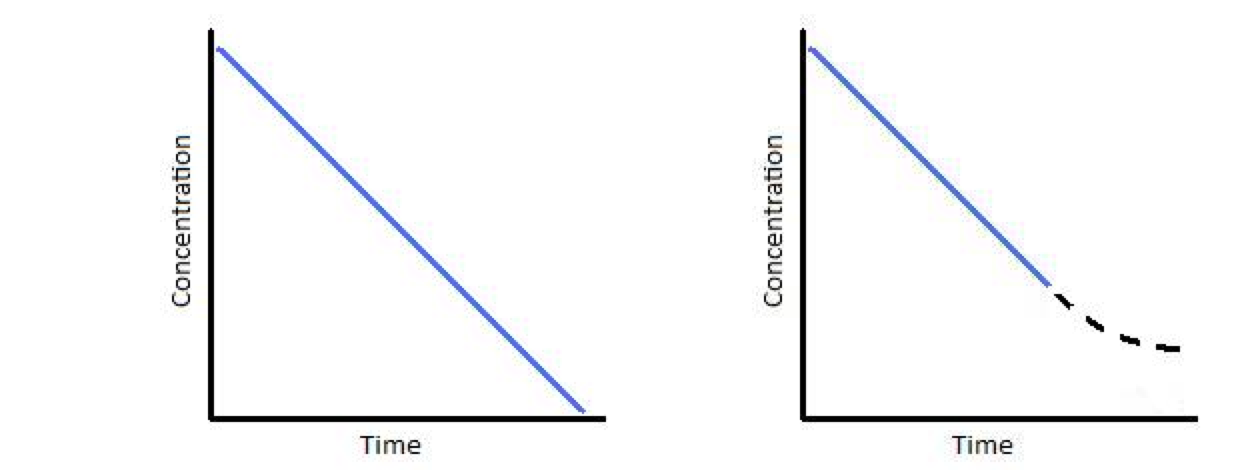
Finally, any BrAC measurement in the pre-absorptive stage can overestimate true Blood Alcohol Content by as much as 230% according to one study. We care about the BAC measurement because it is the BAC that can be most readily converted to pharmacodynamic effect of ethanol.
Don’t just take my word for it. Even when we are not in the “hockey stick” rate of elimination, the scientific community says that this is bad stuff:
- Dr. Hume has written that “The attempt to extrapolate back from a later single test value to the earlier true BAC of a defendant is always fraught with difficulties” (p.32 Fitzgerald and Hume) He further wrote that “a [back extrapolation] BAC-time curve of all individuals is unsupportable” (p.31 Fitzgerald and Hume)
- Dr. Gullberg, one of your instructors, has written that because of all of these variables that are unknowns “[r]esults in estimates having significant uncertainty.” (Gullberg, page 37) He even wrote that “When reporting an estimated BAC, a 2 CV uncertainty interval (95%) should be approximately plus or minus 42%” This is a substantial interval.
- Dr. Martin and his colleagues write and get through peer review that “In this situation [referring to unknown variables], back extrapolation of venous blood alcohol levels, based in a single known concentration can lead to estimates bordering on a wild guess.”
- DRE and Admissions of marijuana and prescription drugs and analytical chemistry results.
The claimed evidence: There is evidence in the police report that Justin Beiber may have allowed himself to be subjected to some sort of drug use evaluation after arrest. According to press outlets (not the police report), the pop singer admitted to having beer, marijuana and prescription drugs in his system. It is unclear the level of evaluation that was used and who did it. It is not known if it was someone who was not trained per NHTSA protocols or if the person had the lower levels of training such as Drugs that Impair Driving course and the Advanced Roadside Impaired Driving Enforcement (ARIDE). Let’s give the government the benefit of the doubt, let’s presume that the very best Drug Recognition Expert (DRE) conducted the evaluation. It is unclear whether or not the full or partial DRE 12-step program was used. There is also conflicting reports that say that his BAC (presumably from a blood draw), was 0.04 BAC.
The scientific truth: The admissions as to drinking, smoking marijuana and taking prescription drugs is not relevant information in and of itself. There needs to be further pharmacological information to make them relevant when it comes to the question of impairment. I have presented at the National Association for Criminal Defense Lawyers (NACDL) on this very topic. Even with an analytical chemistry result, validly opining the pharmacodynamic effect is a fool’s errand.
At least one news report notes that blood was not taken, but rather urine was taken from Justin Bieber. It is scientifically impossible to opine as to impairment as to a urine test when it comes to ethanol (See Urine testing ain’t worth piss) and it is much much more orders of magnitude impossible to opine impairment when it comes to drugs in urine. This is also especially so for urine results when it comes to marijuana and chronic marijuana use (See Why per se Driving Under the Influence of Drug Based Prosecution is Not Scientific and How Probation Violations for Marijuana Use May Be Wrong). Here is some more on the pharmacology of drugs in the DUID context.
This is post number six of our six part post on Pharmacology.
Part 1. Introduction
Part 2. Pharmacokinetics
Part 3. Pharmacodynamics
Part 4. Bioavailabilty
Part 5. “Free versus Bound Drug”
Part 6. Elucidating Pharmacodynamic Effect from an Analytical Chemistry Result
As I have written before (False Conclusions and False Convictions: Attempts of Elucidating Pharmacodynamic Effect from an Analytical Chemistry Result-How Solely an Analytical Chemistry Result in a DUID Prosecution Cannot Scientifically Support a Conclusion of Driving Under the Influence of Drugs), this is what needs to be known:
1. In the case that the police officer made observations of dexterity difficulties, cognitive function issues or psychomotor function dysfunction, or even if he or she attempted to perform or completed a DRE evaluation, the officer or later expert must have information that the motorist is “normal,” meaning that the person was free from any medical pre-conditions that could be confused for impairment. As it is the basic assumption of any observation that there is a noticeable change from the person’s homeostasis, there must first be a known and established homeostasis to establish deviation. One cannot fairly assume that the person is “normal” and dexterous or cognitively quick or psychomotor coordinated. There are many people in this world who are not.
2. The officer or later expert must be privy to the person’s pre-existing physical or mental conditions and then must rule any and all of them as possible contributors to the perceived observations that are later interpreted as impairment.
3. The officer or later expert must be privy as to what symptoms or diagnosis originally lead the doctor to prescribe the medicine to begin with so as to be aware of the person’s un-medicated state. It is an assumption that without the drug that the person would not be impaired. Therefore this data of the person’s un-medicated state is necessary to rule out the possibility that the perceived dexterity difficulties, the cognitive function issues or the psychomotor function dysfunction were due to an inappropriately low dosing and therefore that the person appeared impaired when they were not.
4. The officer or later expert must be aware of all medications that the person ingested including the over-the-counter ones so as to be clear that the affect of the analyte of interest and the other medications either over-the-counter or controlled did or did not influence the measured drug in terms of impairment.
5. The officer or later expert must be aware of the dosing history of the patient in terms of the supposed impairing drug as the dosing history may profoundly impact the affect of the drug dose on the human.
6. The officer or later expert must be aware of the recent dosing usage of the patient as it too may impact the conclusion of impairment.
Too many factors need to be considered, such as:
Was it a single-dose event?
Is the person on a maintenance program (e.g., Methadone, Xanax and Lorazepam)?
Was the person in the absorptive phase, peak or elimination phase at the time of the measure?
Was the person in the absorptive phase, peak or elimination phase at the time of the driving?
What was the potential impact of the drug on the motorist in terms of dexterity, cognitive function or psychomotor function?
If the BAC of 0.04 is valid, this would be a very favorable for Beiber because it shows that he was pre-absortpive at the time of the BrAC measurement. This makes retrograde scientifically impossible regardless of the “hockey stick effect.”
Now we move on to examine the drugs and any analytical chemistry result. The scientific truth is that when even the most robust NHTSA program is examined, the DRE protocol, it is not valid in terms of opining impairment. I was involved in the Pennsylvania case at the Court of Common Pleas level that resulted in the opinion issued by a judge after hearing evidence that the DRE results (even when validly given and interpreted according to protocol) does not meet Frye. Other states such as Maryland has also found similarly. Florida is a Daubert state. So it would be considerably easier to fully challenge it there with the proper experts than in a Frye jurisdiction.
Here is what the published studies show. For background, a likelihood ratio of 1 means that the test generates no useful information about whether the subject is impaired. You want there to be a likelihood ratio greater than 10 to determine that the relation is strong between the diagnostic tool being used (the 12-step DRE protocol) and the conclusion (impairment). According to the studies, the likelihood ratio for cannabis is a paltry 1.58, 1.17, 1.48. The accuracy rate of correctly predicting marijuana in the system of a person that the DRE officer opined was under the influence of marijuana is only 30%. Overall, the likelihood ratio for the DRE for all drugs is only 2.1 which is unacceptably low. Further, according to the studies, the percent accuracy of the DRE officer correctly predicted simply the CLASS OF DRUG being in the urine (not the blood) was as follows:
Narcotic= 38%
CNS depressant= 43%
Stimulant= 9%
Marijuana = 30%
Placebo= 43%
- Beiber is under 21
The claimed evidence: This much is not in dispute. The Canadian singer was born on March 1, 1994 which makes him 19 years old at the time of the offense.
The inferential claim: That as he is under 21, at that BrAC, he is impaired. In fact, there more than a few studies that decry that there is no rational and scientific underpinning to these arbitrary per se levels. This is especially so for a BrAC that low. Here is what the well-known scientifically valid pharmacokinetic and pharmacodynamic studies tell us about the relation of BAC to impairment:
With the combination of drugs being present with that level of ethanol, there likely can be no valid opinion as to impairment for the purposes of driving. There are very few rigorous and well designed driving studies in the scientific community that deal with poly drug use.
- Speeding
The claimed evidence: The officer’s estimation of speed at night to be 55-60 mph with no speed timing device in a 30 mph speed restricted road. According to the police report, we can take away the following allegations. There were two cars. They were traveling northbound on the 2600 block of Pine Tree Drive Miami FL. The officer was traveling in the opposite direction (towards the two cars) meaning he was going southbound with the two cars going northbound.
This would have been the view that the officer had when he made the visual estimation of speed:
Although the picture from Google is from April 2011, I called a friend of mine to see if they could drive past the area to see if it is substantially unchanged. It is substantially unchanged.
The arrest occurred at 300 41st block Miami Beach, FL 33140.
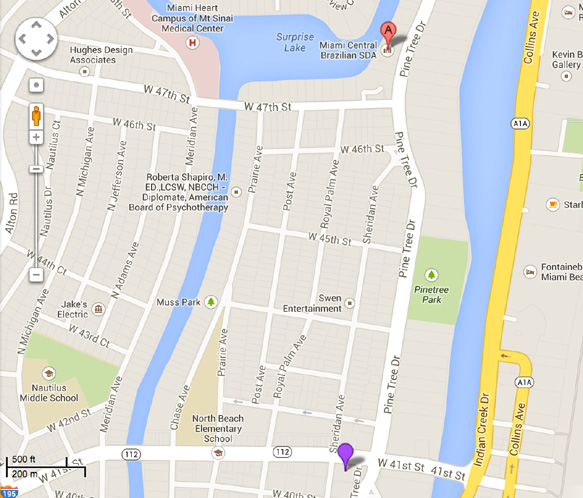
The scientific truth: There is a score of peer reviewed well-researched articles that hold the key proposition that even experienced speed enforcement officers overestimate speed at night even under well lit conditions. Various peer reviewed studies have scientifically estimated that at low speeds (under 50 mph), the overestimation can be as high as 200%. At higher speeds it the overestimation increases. Depending upon the visual cues (relative known sizes of static objects such as bus benches) and whether or not the roadway is straight or curved (perhaps counter-intuitively, it is much easier to estimate correctly speed on a curve). The “opportunity to observe” referring to the length of time to make the observation as measured in distance (feet) and time (seconds or minutes) of the moving object (Bieber’s car) is the largest contributing source of error, the published peer reviewed studies show. The narrower in space, the higher the uncertainty. The less in time, the higher the uncertainty. The key is the degree of contrast, the field, the size and time of vision and the visual acuity (the ambient and focal modes) of the person making the observation. This would call for an expert in the scientific discipline that is known “Human Factors.” There are several internationally recognized and published experts whom I know and work with professionally who can provide the necessary testimony that would disprove the reliability of the officer’s estimation of speed at night.
What I would be doing now: First, I would hire the correct human factors expert. Second, I would gather all of the sources possible that will be able to show what the lighting conditions were like on that night, in that area, and at that time. I would get surveillance videos of nearby businesses, police dash cameras through FOIA, get the various news outlet’s footage for their “on the spot coverage,” and make a call to the public to see if there are any other sources such as cell phone video footage or cell phone pictures such as the TMZ one above. Third, I would get the police officer’s personnel file to find out what his vision was. To become a certified police officer, you must have a vision test, and it likely has to be periodically checked. To have a driver’s license, you must take a vision test. There are records of these things. I would perhaps even file a motion to compel that he undergo a full ophthalmological survey and testing to determine what his visual capabilities are. I would have such a study preformed by a board certified opthomologist using international standards such as those promulgated by The International Council of Ophthalmology (ICO) that involve at least the “Eight-Point Ophthalmology Exam” or “The Advanced (FICO) examination.” Based upon this data, I would commission a forensic Luminescence study (i.e., a study of the lighting in the area at the time combined with the visual acuity of study officer) by a human factors expert. This information will help to pin down the likely uncertainty of the estimation of speed at night time to this officer. Based upon what I see here, the chance of overestimation of speed is very, very great.
Here is the only known surveillance video of the alleged drag racing:
(Video credit to CNN.com)
It sure seems to be not even close to drag racing in a Lamborghini Gallardo LP 550-2 Spyder that he was supposedly driving. According to the manufacturer, the top speed is 319 km/h (198 mph) with a rate of acceleration 0-100 km/h (0-62 mph) in 4.2 seconds.
Further, according to TMZ, the cars were only clocked at 27 mph. This level of tracking is entirely possible due to the Lamborghini & Audi Navigation Systems that come standard in these cars. They are the AISIN system. TMZ.com was able to obtain a copy of the GPS records. You can view them here: GPS records.
The inferential claim: The exhibition of speed and the alleged racing is an clue of intoxication under the totality of the circumstances.
The scientific truth: In March 2010, the National Highway Traffic Safety Administration (NHTSA) published a study to determine the correlation of certain behaviors with being over a 0.08 or to impairment. This resulted in a publication called “The Visual Detection of DWI Motorists” NHTSA publication DOT HS 808 677. It is referred to as the “24 Nighttime Clues of Intoxication” in DUI defense and enforcement circles.
Building upon the previous NHTSA study, researchers interviewed officers from across the United States and developed a list of more than 100 driving cues that have been found to predict blood alcohol concentrations (BAC) of 0.08 percent or greater. The list was reduced to 24 cues during 3 field studies involving hundreds of officers and more than 12,000 enforcement stops.
Specifically, speeding was studied. It was prominently thought to be significant and was placed on the 100 list. After more study, NHTSA found according to its data that speeding was not only not to be a clue of impaired driving at night meaning the the correlation was under p>.35 (under 35% correlation), but it was found to have a negative correlation to actual DUI driving. This means that a speeder is statistically less likely to be drunk than not drunk at night. Remember, this is NHTSA’s own numbers and research accepted as true based upon over 12,000 enforcement stops.
- Odor of alcohol
Believe it or not, there are some officers out there that think that based upon an odor of alcohol alone they can figure out a BAC. Listen to this testimony under oath from a self proclaimed DUI top cop in a recent case that I had.
The empirical studies make clear that the reference to an “odor of alcohol” means very little by itself. In fact, what the officer talks about in the above audio clip is the opposite of what we find in the literature. Here is what is in the literature:
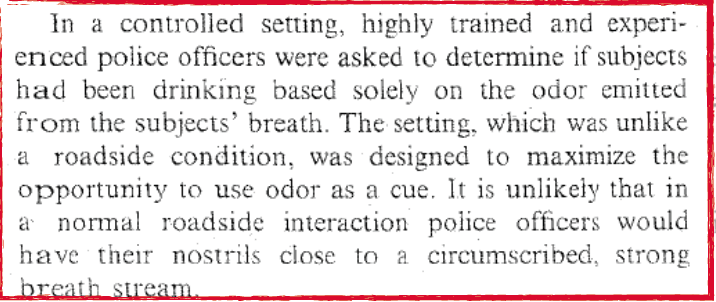
And in the same study we find the following additional conclusion based upon the data:
The claimed evidence: Again, according to the police report, Beiber is claimed to have bloodshot eyes which the officer was an “indicator[] of an impaired driver.”
The scientific truth: As I have written on www.TheTruthAboutForensicScience.com before:
Beginning in 1997, the National Highway Traffic Safety Administration in a publication by the Southern California Research Institute found that bloodshot and/or glassy eyes were not a reliable indicator of intoxication. Therefore, the assumption made by the officer that the bloodshot, glassy eyes and is a manifestation of impairment is unproven and non-validated. They wrote:
Finally, some clues of impairment were eliminated because they might be indicators more of social class than of alcohol impairment. For example, the interview and archival research indicated that a flushed or red face might be an indication of alcohol-impairment in some people. However, a flushed or red face or bloodshot eyes are open to subjective interpretation and could be due to allergies or caused by outdoor work.
A disheveled appearance similarly is open to subjective interpretation. We attempted to limit the recommendations to clear and objective post-stop behaviors.
Overall legal admissibility issues of the BrAC test
It seems as if there is a large glaring issue with the potential admissibility of the breath or blood test. At the time of the arrest, there was no Standardized Field Sobriety Test administered, according to the police report. According to State v. Kliphouse, 771 So. 2d 16 – 2000 the odor of alcohol is not enough for an arrest for DUI. Even if there is a lawful arrest for the drag racing, that does not justify the Implied Consent demand for the breath and blood. The exhibition of speed (drag racing) is an arrestable offense in and of itself under Florida law. However, there is no legal justification for the chemical demand as a “search incident to arrest.” In order for there to be a lawfully triggered chemical demand for breath or blood, it has to be based upon the evidence as to DUI. It seems as if the admissions of beer, prescription drugs and marijuana occured during the DRE protocol which would have been step 10 (Subject’s Statements and Other Observation) which is well after the breath testing which would have been part of Implied Consent which is Step 2 (Interview of the Arresting Officer) of the 12-step DUI protocol. Based upon what we know now, there may be an invalid Implied Consent demand. This would make the BrAC and the BAC inadmissible.
So, if the arrest is for DUI, then it seems as if they have speeding (not a night time clue) plus an odor of alcohol. Again, that is not going to be enough.
They can pick their poison. It is a DUI arrest, in which case there is no PC and all after-acquired evidence is suppressed. Or it is an arrest for the drag racing, in which case there is an improper BAC and BrAC demand which makes that BAC or BrAC inadmissible.
The Problem with the Resisting Arrest without Violence charge and Drag Racing Charge
The alleged drag racing. We find the controlling statute at 316.191 (Racing on highways). The alleged drag racing is a misdemeanor on view arrest authorized offense in Florida. This would be a lawful arrest…. if it actually happened. See the above discussion. At least night now, going 27 mph in a 30 mph zone makes for a pretty poor race. The video shows very very slow driving. Per the statute “Drag race” means the operation of two or more motor vehicles from a point side by side at accelerating speeds in a competitive attempt to outdistance each other, or the operation of one or more motor vehicles over a common selected course, from the same point to the same point, for the purpose of comparing the relative speeds or power of acceleration of such motor vehicle or motor vehicles within a certain distance or time limit. Also per the statute, “Race” means the use of one or more motor vehicles in competition, arising from a challenge to demonstrate superiority of a motor vehicle or driver and the acceptance or competitive response to that challenge, either through a prior arrangement or in immediate response, in which the competitor attempts to outgain or outdistance another motor vehicle, to prevent another motor vehicle from passing, to arrive at a given destination ahead of another motor vehicle or motor vehicles, or to test the physical stamina or endurance of drivers over long-distance driving routes. A race may be prearranged or may occur through a competitive response to conduct on the part of one or more drivers which, under the totality of the circumstances, can reasonably be interpreted as a challenge to race. It doesn’t seem to fit here.
The alleged resisting arrest without violence. According to the Florida appellate case entitled DANIELA MARTINEZ Appellant, v. STATE OF FLORIDA, the lawfulness of the arrest is an element that the government must prove to provide for a conviction. In short, the statute reads that it is only a crime if you resist during the “lawful execution of any legal duty.” The common sense basis is that voicing objections or questioning police actions is protected First Amendment speech or action. Again, according to the police report, Bieber was ordered out of the car by the police officer. Bieber allegedly colorfully asked him why. Bieber reportedly kept putting his hands in and out of his pockets. By way of inference in the police report, Bieber was ordered to put his hands on his car for purposes of a Terry style stop and frisk (investigatory detention). It is unknown what legal justification the officer might have had in ordering him to do so as a Terry style stop and frisk. Under the Terry doctrine, police officers may stop a person if they have a reasonable suspicion that the person has committed or is about to commit a crime, and may frisk the suspect for weapons if they have reasonable suspicion that the suspect is armed and dangerous, without violating the Fourth Amendment prohibition on unreasonable searches and seizures. Bieber is then allegedly searched or the search is about to begin or in process. It seems through inference in the police report, that he removes his hands from the car perhaps repeatedly and allegedly colorfully objects and questions as to what is going on at the moment. The officer issues him an order that if he keeps on removing his hands from the car, he will be arrested. He allegedly removes his hands again. The officer takes control of his wrist. Bieber questions that, and allegedly moves his captured hand. An arrest is made. Based upon these facts, it is at the very least questionable as to whether or not there is a lawful arrest. This spells problems for the prosecution as the lawfulness for the arrest is an essential element that the prosecution must prove for there to be a conviction.
Of course, all of these facts and opinions are subject to revision should more facts be presented or new information learned or clarified.
Why there will likely be no DUI defense in this case.
Sadly, when it comes to celebrities, the truth is frequently an after-birth of justice if it ever comes to be present in the courtroom at all. Justin Bieber is charged with Driving with a Suspended License, Resisting Arrest, and DUI. He is a resident of Canada. He is here by permission. He is an industry onto himself. According to Forbes, he earned $54 million in 2013. That is a lot of money. He has to be concerned about immigration consequences to all of this if there is a conviction. However, the DUI, the Driving Without a License, and the Resisting Arrest without Violence are not per se deportable offenses. Despite the name, the type of resisting arrest that he was charged with, namely the without violence section, is also not an aggravated felony and does not involve a crime of moral turpitude and therefore is not per se deportable. So, the practical move for the defense most likely is to try to negotiate away the Resisting Arrest and then plead to the remaining charges. You try to minimize the news cycle on all of this. He gets placed on probation.
However, this is perhaps too short sighted. One must account for changes in the law and changes in policy. He is 19 years old. He has a lifetime of earning potential. A non-aggravated DUI has been held by the United States Supreme Court to not be an automatically deportable offense, but a change in the law is only ever 5 votes away. Same is so with the other crimes.
I wish good luck to Justin Bieber. I lawyer-scientist can really make a big difference in his case. This is what I uncovered based simply on the police report and some leaked news. Imagine what I could do with more information.
No one wants impaired drivers on the road. We all have friends and family. Truly dangerous impaired driving can kill. I also equally don’t want innocent people punished for committing no crime. Both are equally unacceptable to me in my book. Let’s take the time to get this right. Let’s take the time to get all DUI accusations correct.
We at The McShane Firm believe in the motto of the National College For DUI Defense, Inc.: “Justice Through Knowledge” and also the motto of the Pennsylvania Association for Drunk Driving Defense Attorneys: “Defending with integrity, knowledge, and ethics.” We are here to help.
_____
Special thanks to the following people that were consulted:
For details on the BrAC program in Florida: Stephen Daniels (www.DUIundo.com) and Michael Kessler (www.kesslerlawfirm.com)
For the arrest information under Florida law: Michael Kessler (www.kesslerlawfirm.com), Michael Dye (http://yourfloridacriminalattorney.com/criminal-attorney-fort-lauderdale/), and Tom Hudson (http://www.amazon.com/The-Drinkers-Guide-Driving-ebook/dp/B00F0Y7I92/ref=sr_1_1?ie=UTF8&qid=1378518048&sr=8-1&keywords=The+drinker%27s+guide+to+driving)

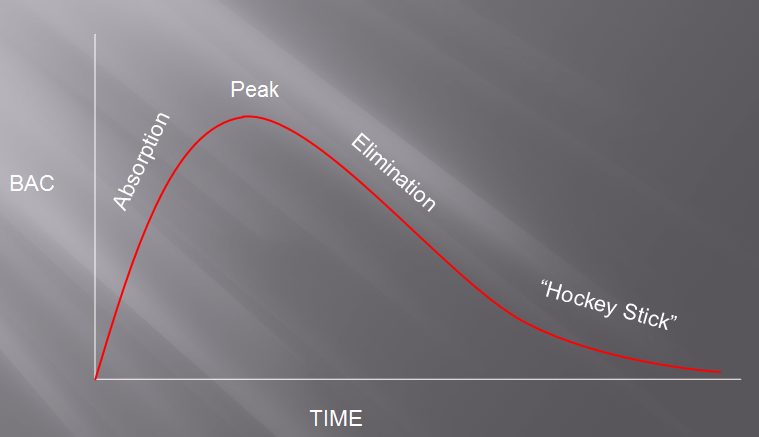
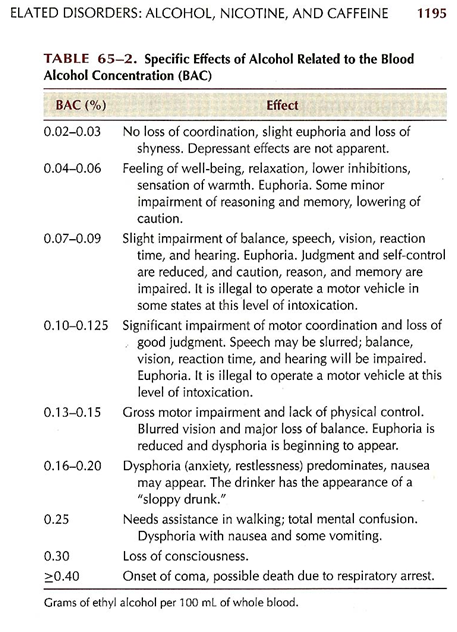
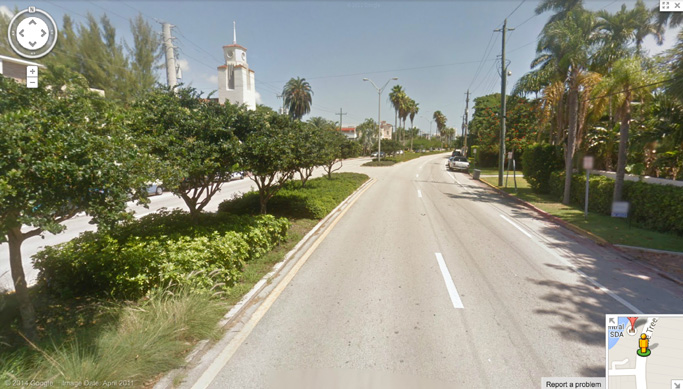

Jessica Bernstein says:
Bieber should retain you for his defense!
Justin McShane says:
Thank you for the thought.
Roberta Figueroa says:
Well explained case study. This is one of the proof that an experienced DUI lawyer can help from DUI cases.